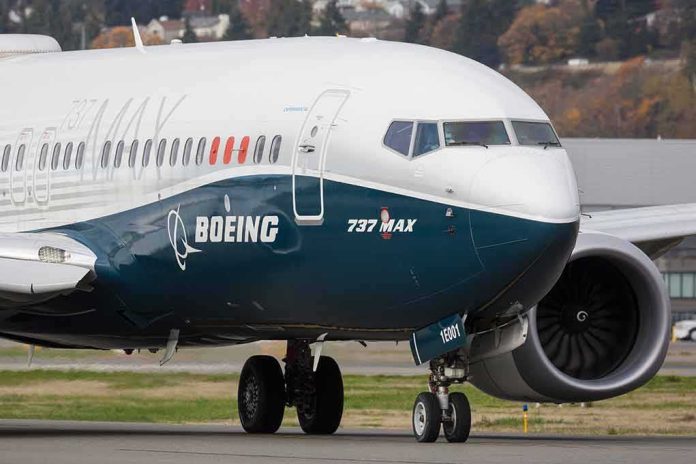
Boeing 787 shears off Airbus A321’s tail at Hanoi Airport in a terrifying tarmac collision that prompted immediate suspension of all pilots involved.
Key Takeaways
- A Vietnam Airlines Boeing 787-9 Dreamliner’s right wingtip sliced through an Airbus A321’s vertical stabilizer while taxiing at Hanoi’s Noi Bai International Airport
- All four pilots have been suspended pending investigation, with preliminary findings suggesting the Airbus A321 was improperly parked on taxiway S3
- The incident, classified as Level B (second highest on the safety breach scale), affected 386 passengers but resulted in no injuries
- The collision occurs during what’s being reported as one of the deadliest years for air travel in the past decade, raising additional safety concerns
Dramatic Collision on Taxiway
On Friday afternoon, a routine day at Hanoi’s Noi Bai International Airport turned chaotic when a Vietnam Airlines Boeing 787-9 Dreamliner collided with a parked Airbus A321 around 2 p.m. The Boeing’s right wingtip struck the Airbus’s vertical stabilizer (tail) with enough force to severely damage both aircraft. The impact scattered debris across the taxiway, requiring immediate clearing operations. Both planes were grounded immediately following the incident, forcing the airline to make alternative arrangements for the 386 passengers affected by the collision.
“Two Vietnam Airlines collided after a Boeing aircraft cut too close to an Airbus, slicing its tail on the airport tarmac,” reported by media.
Swift Regulatory Response
Vietnam Airlines took immediate action following the incident, suspending all four pilots involved—two from each aircraft—pending the results of a comprehensive investigation. The Civil Aviation Authority of Vietnam (CAAV) has classified the collision as a Level B incident, the second highest on their five-tier safety breach scale, indicating the seriousness with which authorities are treating the matter. Both Vietnam Airlines and aviation authorities are conducting parallel investigations to determine the exact cause and responsibility for the collision.
“Vietnam Airlines said it suspended the four pilots, two from each flight crew, from Friday afternoon pending the results of an internal investigation,” stated Vietnam Airlines.
Preliminary Findings Point to Parking Error
Early investigative reports suggest that improper parking of the Airbus A321 on taxiway S3 may have been a significant contributing factor to the collision. The aircraft was reportedly not positioned according to standard procedures, creating a hazardous situation when the Boeing 787 attempted to navigate the taxiway. This finding shifts some focus to ground operations and aircraft positioning protocols at the airport, highlighting potential systemic issues that may need addressing beyond the actions of the flight crews.
“Vietnam Airlines said it is fully cooperating with aviation authorities to determine accountability and prevent similar incidents in the future,” Vietnam Airlines added.
Broader Aviation Safety Concerns
This incident occurs during what’s being reported as one of the deadliest years for air travel in the past decade, with 2025 experiencing nearly double the average number of aviation-related fatalities. While this particular collision resulted in no injuries, it adds to growing concerns about aviation safety standards worldwide. The increasing frequency of incidents, from maintenance issues to operational errors, has raised questions about whether the rapid post-pandemic recovery of air travel has outpaced the industry’s ability to maintain rigorous safety protocols.
The grounding of both aircraft for thorough inspections and the comprehensive investigation underway demonstrate the seriousness with which safety breaches are treated, even when they don’t result in injuries. As Vietnam Airlines works with authorities to determine accountability and implement preventative measures, this incident serves as a stark reminder of how quickly things can go wrong in aviation and the critical importance of maintaining stringent operational standards at every level.







